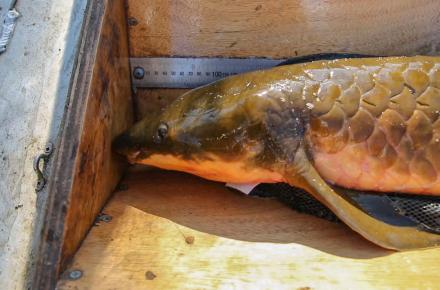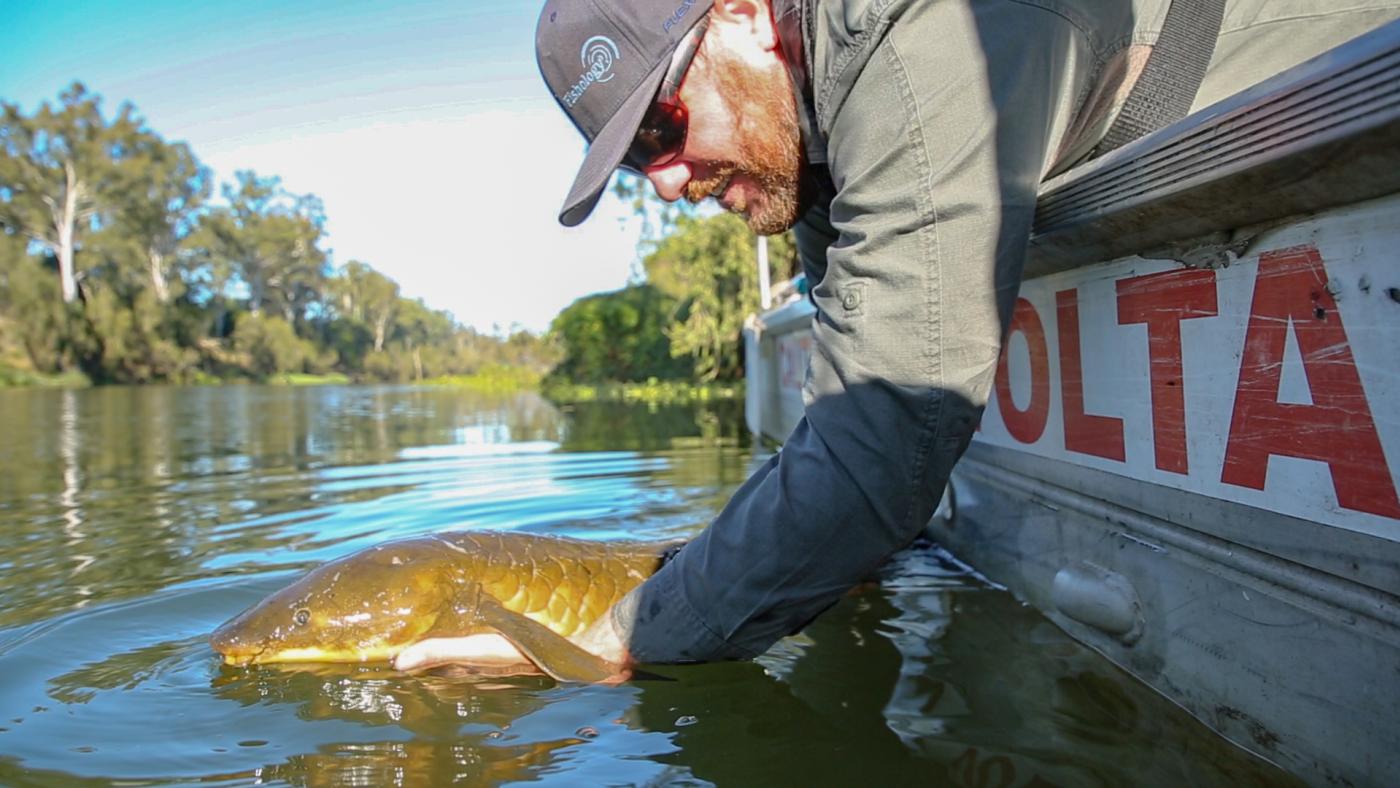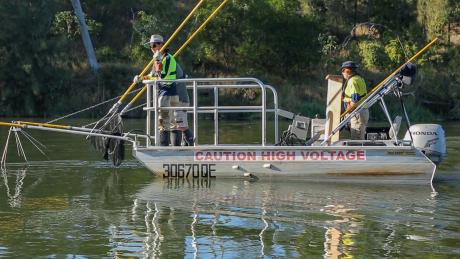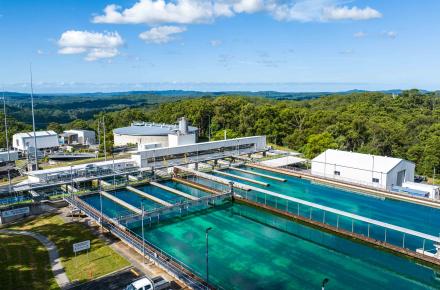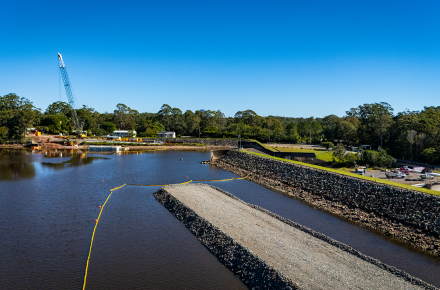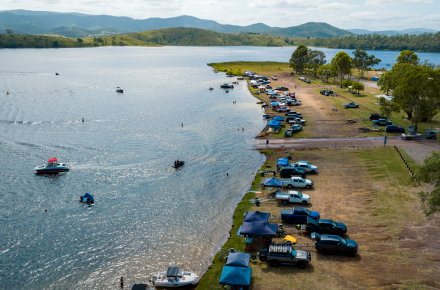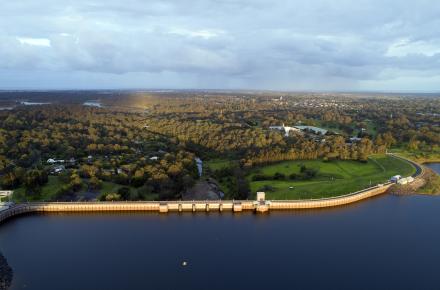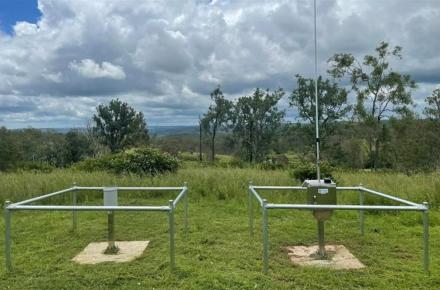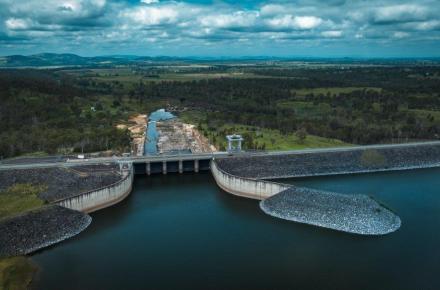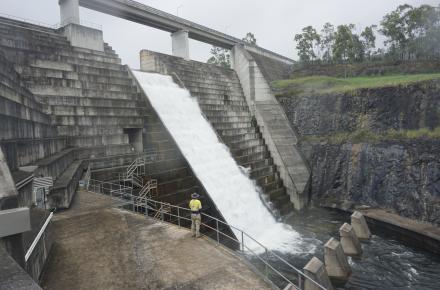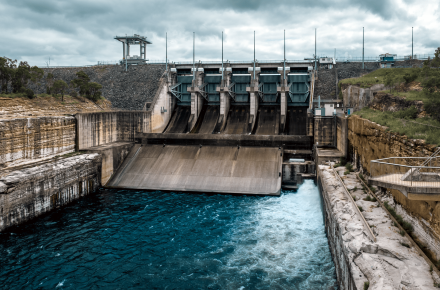As part of a long-term environmental initiative, South East Queensland bulk water supplier, Seqwater, has been monitoring and documenting Australian lungfish populations in various SEQ waterways for more than a decade.
Seqwater Senior Scientist, Dr David Roberts, said lungfish were ancient creatures that had remained unchanged for more than 100 million years – pre-dating the dinosaurs.
Dr Roberts said lungfish were named as such because, unlike most fish that only get their oxygen by passing water through their gills, lungfish have developed lungs which allowed them to breath air as well.
However, despite their longevity and their evolutionary adaptations, Dr Roberts said lungfish are listed as a vulnerable species that are negatively affected by a range of factors, including degraded habitats, that could affect breeding success.
Dr Roberts said he had been monitoring lungfish numbers for the past 10 years and the data showed the population of lungfish in the mid-Brisbane river was stable over this period.
“We monitor lungfish downstream of our dams as barriers to movement and altered flow regimens downstream of these dams have the potential to adversely affect lungfish and their habitats and we want to make sure this isn’t happening,” Dr Roberts said.
“Our research is telling us that populations of lungfish are stable and while their habitats change year to year from droughts and floods, lungfish live for around 70 years, so they have the ability to wait out the bad years for when conditions improve again”.
“We know a lot about what lungfish need to breed and we are embarking on programs to improve the quality of the breeding habitats so that lungfish populations remain healthy”.
“All our research is being used to develop a population model for this species so we can make sure populations remain healthy long into the future.”
In order to conduct the research, Dr Roberts said Seqwater uses electrofishing technology to safely catch the fish, record their details and release them back into the water, unharmed.
“Electrofishing involves passing an electrical current through water, which temporarily immobilises the fish while causing them no harm, so they can be netted and processed,” Dr Roberts said.
“We check the fish for previous microchip tags we placed on them during earlier research and record details such as length and weight. If the fish is one we haven’t caught before, we insert one of these tags so we can begin tracking it.”
Dr Roberts said recent genetic studies had concluded the lungfish found in the Brisbane River were likely to have been brought here from the Mary River.
“Back in the 1890s,lungfish were spread around different rivers across parts of south east Queensland to increase their chances of surviving long-term,” Dr Roberts said.
“The future for Australian Lungfish is looking pretty good, as a protected species and global natural treasure, we want to do as much as we can to make sure it stays around for good.”
Australian Lungfish facts:
· They are a very large freshwater fish, growing up to 1.5 metres in length.
· Unlike the African and South American lungfish, the Australian lungfish only has one lung. It can survive brief periods out of the water and withstand poor water quality allowing it to survive in severe drought conditions.
· They are one of the first animals to evolve true enamel on their teeth, like humans have.
· Lungfish are known as lobe-finned fish because of their fleshy limb-like fins that contain bones resembling the limbs of land animals.
· All land animals on earth (including humans) are thought to have evolved from an ancient form of Lungfish.
· They can live for a long time, with the oldest fish found in the wild being 72 years, and one Australian lungfish surviving for well over 90 years in captivity.
· They are mostly omnivorous, eating a wide range of foods from snails and mussels, frogs, tadpoles, invertebrates and some plants.
· They are one of the oldest living species on earth, with fossils resembling modern lungfish dating back over 100 million years. In fact, scientists knew about the lungfish through fossils well before living lungfish were discovered by modern scientists in the Burnett River in 1870
